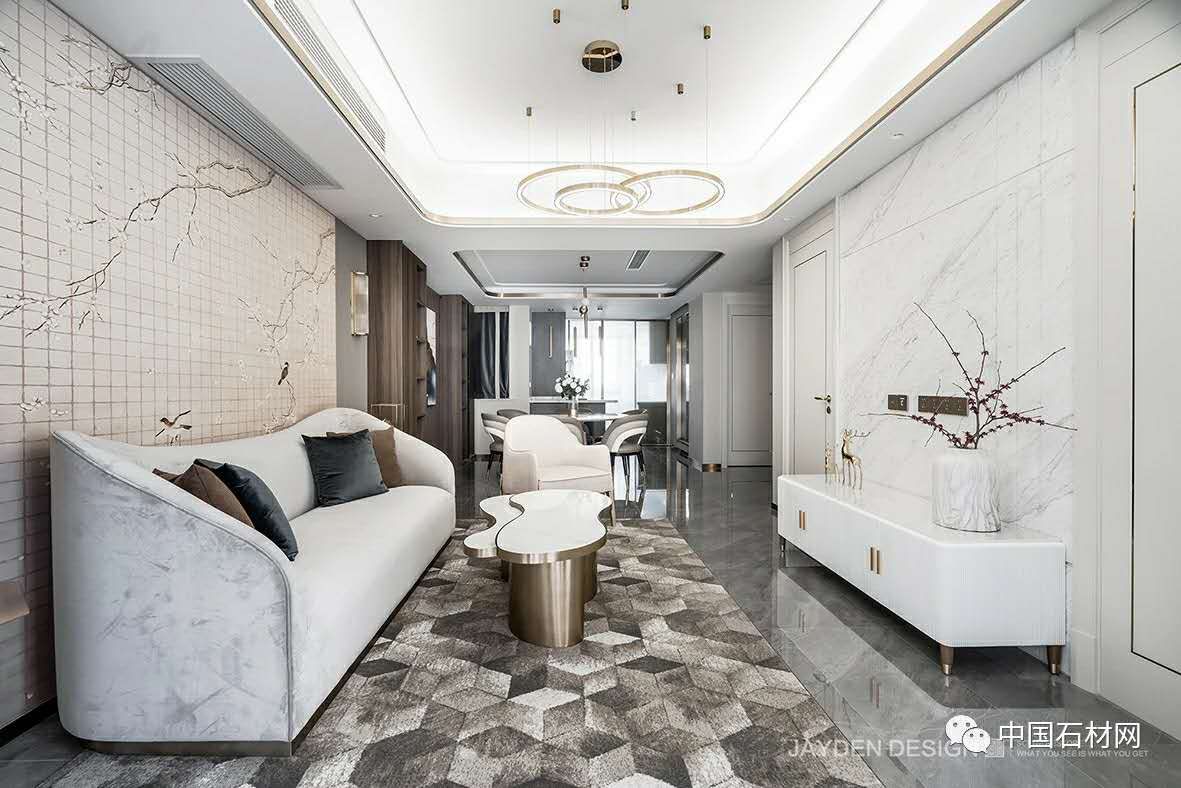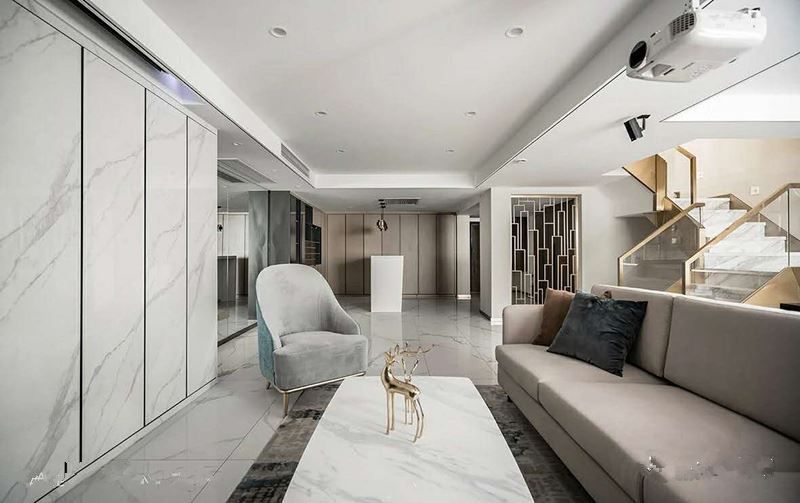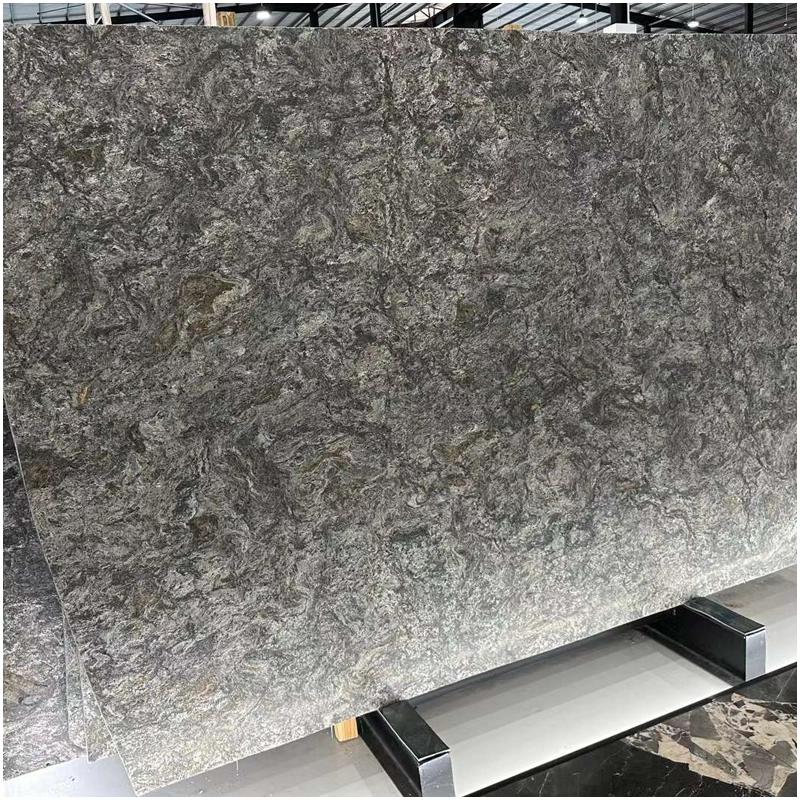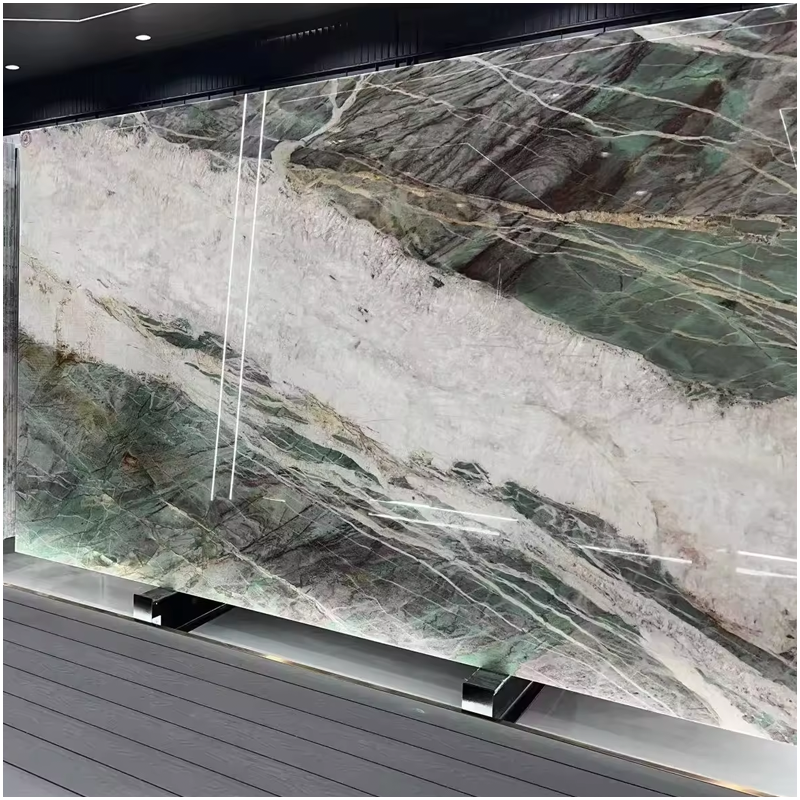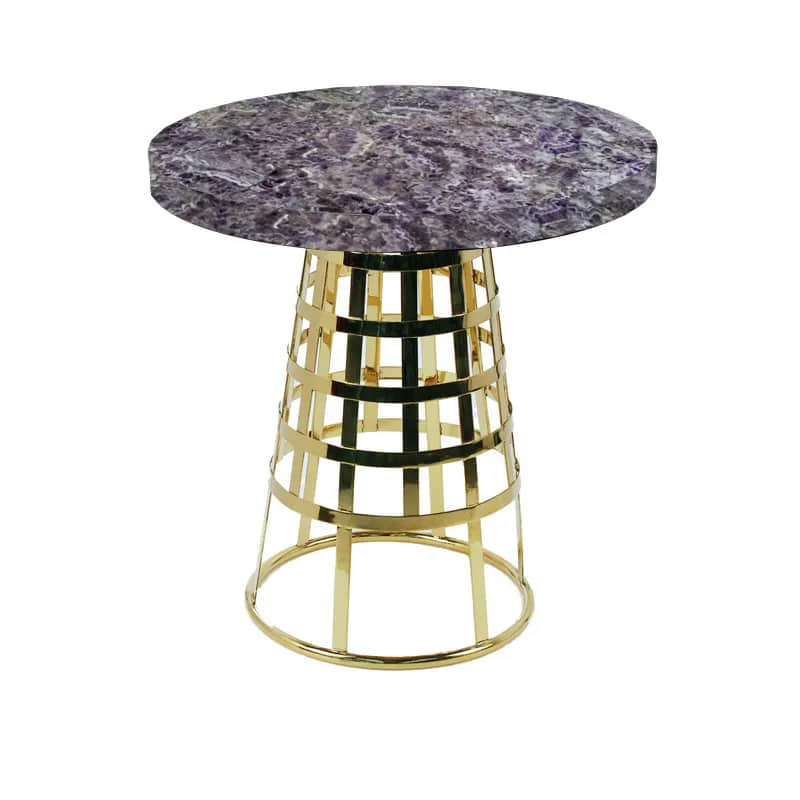Why does white marble yellow frequently? The most comprehensive analysis and prevention measures in history
White marble is expensive! Because: white marble is beautiful! And because: white marble is rare! Even more because: white marble processing and installation requirements are very high and difficult!
Among the many marbles, white marble is undoubtedly one of the most widely used stones. White marble is applied to high-end luxury wall surfaces, floors, background walls, stairs; countertops and other places. Some people even play tricks on white marble, such as Clothes, light bulbs, fruit bowls, loudspeakers, even toilets, etc.
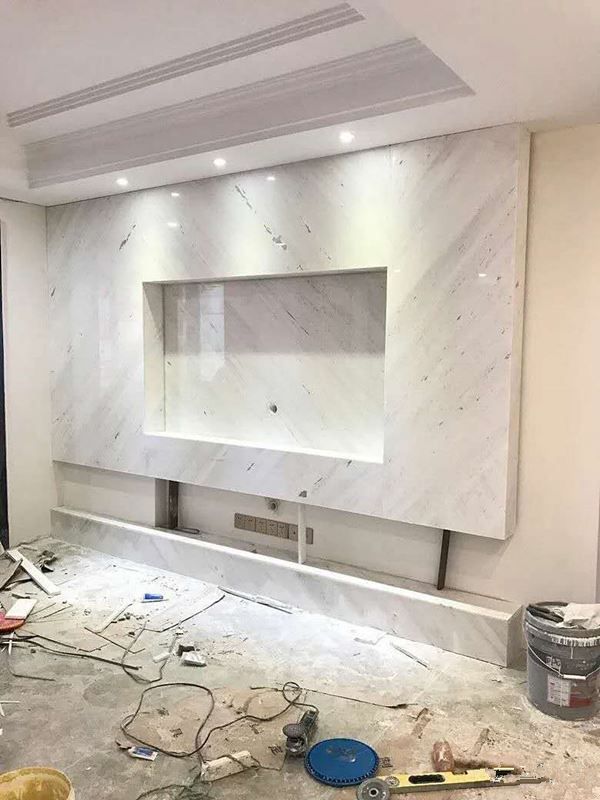
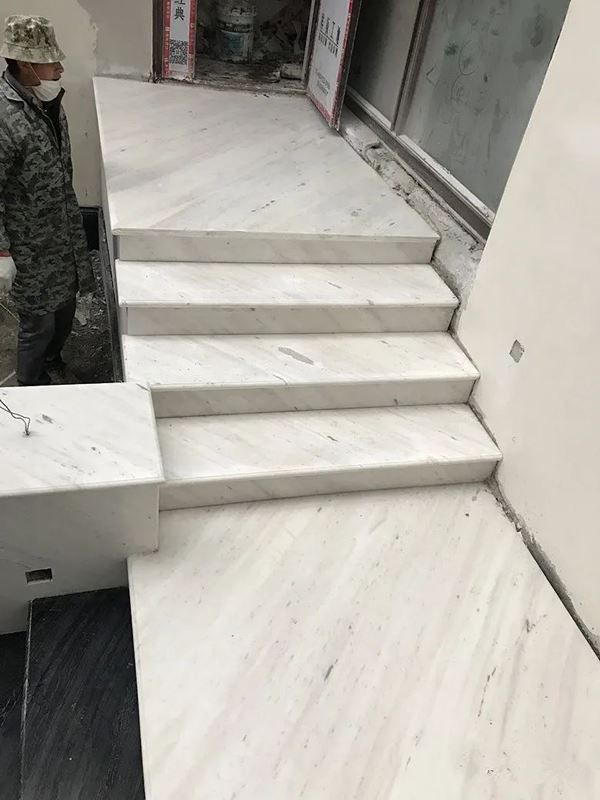

The simple elegance of white marble, noble temperament, softness and delicateness are really addictive, and the effect of decoration is even more extraordinary, it is simply awesome. Its gentle tones, snow-capped, pure beauty like snowflakes, allow many designers to make full use of and display.
But at the same time, it is also the most loved and fearful variety, but the anti-fouling of white marble is fragile, fragile, difficult to wait for and some users regret it, especially the fact that white marble is prone to yellowing, it is also a favorite The users of white marble are at a distance.
If we want to solve the quality problems such as white hair and yellow hair, then we have to analyze the internal and external factors and thoroughly understand the nature of the marble and the root cause of the quality problem to solve the fundamental problem. So what is causing the yellowing of white marble? How to maintain the original appearance of white marble? The editor gives you a trick!
1. The structure and composition of the stone itself
Scanning electron microscope research on the most common white marble surface found that on the surface and texture of white marble, iron minerals with particle sizes ranging from 2 microns to hundreds of microns exist, some are distributed on the surface of the slab, and some are enriched in Lines.
The oxidation of iron minerals contained in white marble is considered to be the main cause of marble yellowing. Except for the texture part of most marbles, the rest of the patterns are relatively uniform and uniform. When the iron-containing minerals randomly dispersed in the marble are oxidized to form yellow or brown hydrated iron oxides, the defects and aesthetics of the board surface are formed. This phenomenon is particularly prominent for white marble.
The iron in white marble mainly exists in ferrous sulfide, iron carbonate and ferromagnesium silicate. These iron minerals are dispersed in the marble matrix or enriched in the marble texture.
When these ferrous iron minerals on the surface of the stone are oxidized by the oxygen in the air to form ferric iron and combine with water to form hydrated ferric hydroxide, the rust that we often say is formed, commonly known as yellowing. If no protective measures are taken, this marble yellowing phenomenon will appear 8-12 months after the marble is installed.
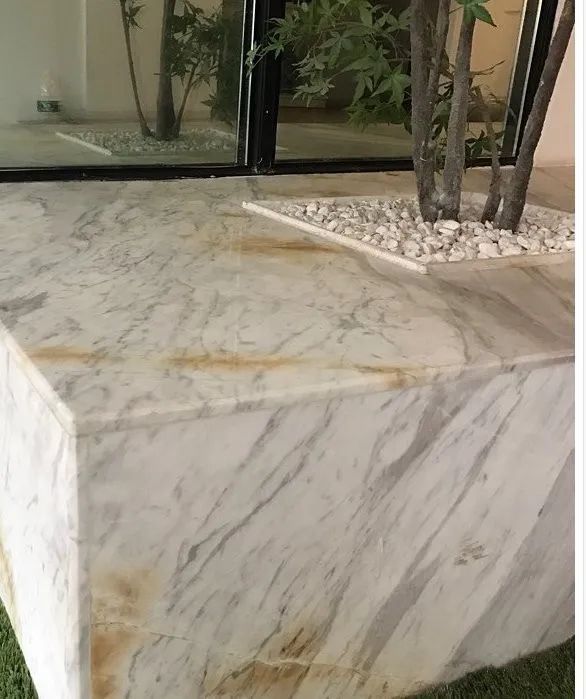
An interesting phenomenon is that the yellowing phenomenon does not occur when it is placed in a heat source, such as marble next to a hot water pipe, which shows that the yellowing phenomenon of white marble is closely related to moisture. However, contact with water does not necessarily cause yellowing of white marble.
The thermal shock test on white marble showed that the stone samples were placed in 15~25oC deionized water and soaked for 6h, and then the samples were placed in a 100~110oC oven for 18h. After 20 such cycles, it was found that only the samples rich in iron on the surface showed a slight yellowing phenomenon, and the degree of yellowing was much lower than that of natural yellowing.
This experimental phenomenon shows that due to the very low conductivity of deionized water, the oxidation-reduction reaction of ferrous iron to ferric iron proceeds very slowly. Therefore, although the sample was immersed in water for a long time and repeated many times, there was no obvious yellowing phenomenon.
The results of this test show that the yellowing phenomenon of white marble is the result of the combination of oxidation and hydration on the surface of the bivalent iron minerals on the stone. These two conditions are indispensable. Unlike soaking in ionized water, white marble is very easy to cause yellowing when soaked in alkaline solution.
Place the same stone sample in alkaline water at 15-25°C for 6h, and then place the sample in an oven at 50-60°C for 18h. After 20 such cycles, the experiment found that all the white marbles selected for the experiment turned yellow, with Carrara white marble being the most severe.
Alkaline solution is easy to make white marble yellow. The reason is that in the alkaline medium, the oxidation-reduction potential of ferrous iron is oxidized to ferric iron, which is easily oxidized by the oxygen in the air to ferric iron. The combination of water forms a yellow pollution of the board surface.
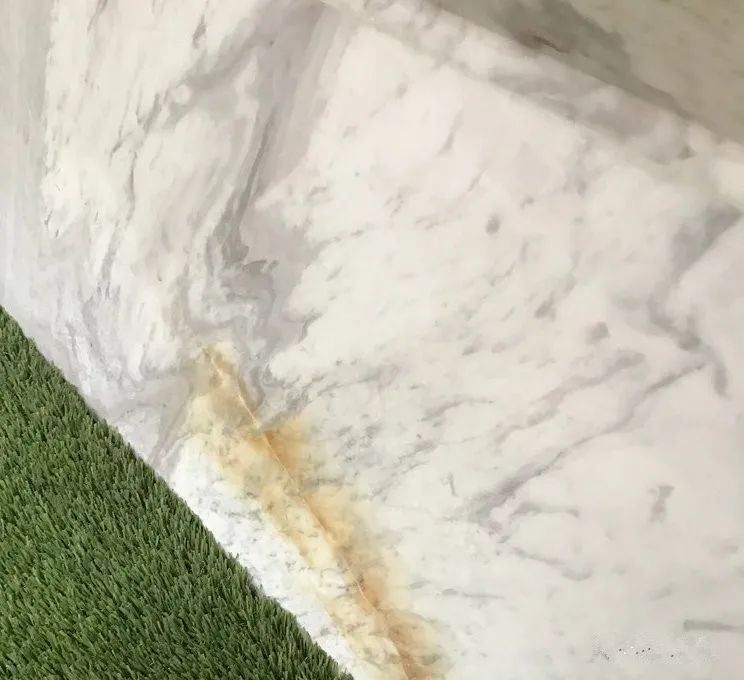
The ferrous iron on the surface of the stone is oxidized by oxygen in the air to form ferric iron and combines with water to form hydrated ferric hydroxide whose solubility is extremely low. Therefore, the yellowing pollution caused by iron cannot be easily removed. The second type of yellowish pollution on the surface of white marble slabs comes from organic substances inside the marble. These organic substances exist in the formation of marble, and their structure is similar to rot plants.
The water-soluble organic substances present inside the marble often show a brownish yellow color when reacting with alkaline water. Due to the existence of such organic matter inside the marble, when the marble floor or wallboard without the back treatment of the slab is installed by wet paste, the alkaline water of the cement slurry penetrates the marble and reacts with the organic matter in the marble to produce a colored product When these colored products are brought to the surface of the stone by water, the second pollution of the stone surface is formed.
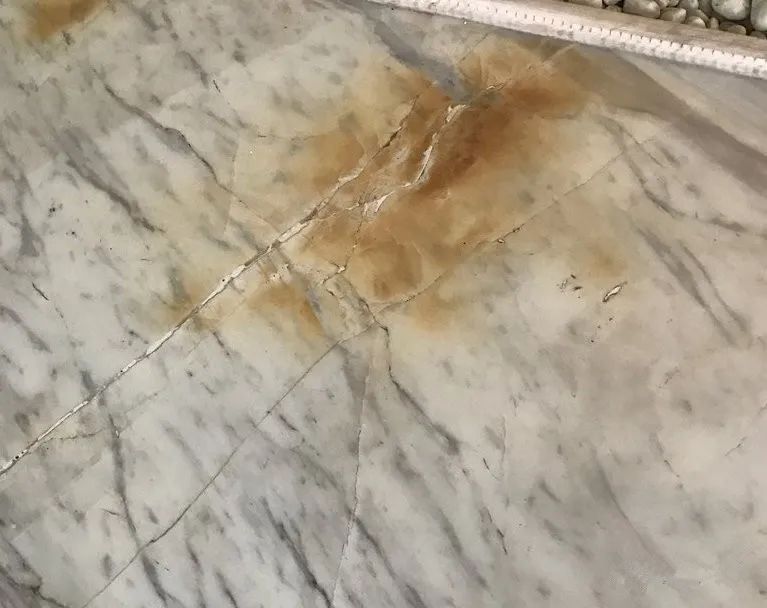
Even during the use period after the stone is installed, due to climatic reasons, whenever water penetrates the concrete surface and then seeps out of the stone surface, it will always bring colored organic pollutants to the stone surface.
Second, external reasons
The two types of pollution above white marble come from the internal composition and structure of the stone, which occurs under the influence of external conditions. In addition to these two types of pollution related to stone components and structure, pollution from the outside has the following aspects:
1. Yellowing caused by wear
As the polished surface of the marble wears, dirt is brought into the pores of the marble surface along with the walk. These dirt make the white marble surface yellow.
2. Yellowing caused by incorrect care
The most common incorrect care is to wet the ground with a dirty mop. The dirt brought by the dirty mop accumulates inside the marble, causing the marble surface to become contaminated and turn yellow.
3. Yellowing caused by waxing
When wax is commonly used to polish the marble surface, the thick wax layer turns yellow due to its own aging.
4. Yellowing caused by crystal surface treatment
The steel wool used in the crystal surface treatment remains in the fine pores of the polished marble slab surface with tiny fine powder, which becomes the source of yellowing. Especially when the marble is subjected to crystal surface treatment in a wet state, yellowing is prone to occur.
5. Yellowing caused by the installation process
The yellowing caused by installation is easily overlooked, but it is widespread.
Before the installation of the marble floor or wall, the so-called six-sided waterproof treatment is applied to the stone specification board: the bottom is waterproof and glued, and the four sides and the front are treated with a permeable waterproofing agent.
If such a six-sided waterproof treatment is done very well, the quality of the selected waterproof material is also guaranteed, and in theory, there should be no yellowing related to water. But the fact is that even the six-sided waterproofing of the stone panel before installation is considered to be well done, and the yellowing of the panel surface after installation still occurs from time to time.
6. Stones related to installation turn yellow
It is mainly caused by two aspects. First, due to installation size requirements, on-site cutting has destroyed the original waterproof treatment of one side; another possible situation is that the construction environment is dirty and the cement slurry falls on the board surface during the construction process. In order to prevent the falling cement slurry from drying up on the board surface, wipe the falling cement slurry with a wet towel. At this time, it is very likely that the strong alkaline cement water will be wiped into some dark cracks on the board surface, because even if it has been done The surface of the permeable waterproof treatment, but it is impossible for the tiny waterproofing agent molecules to form a protective film across the crack at the crack to shield the crack.
Therefore, the coverage of the waterproofing agent at the crack is very limited. When installing, use a gray knife to scrape the side of the specification board with cement slurry back and forth, and it will also destroy the waterproof treatment that has been done. If you accidentally bring cement water into the cracks of the board surface while wiping the board surface, the yellowing of the board surface is sooner or later rather than whether it will yellow.
3. The prevention of quality problems such as yellowing of white marble, the following points must be paid attention to during the processing and installation process, so that white marble can perfectly display the beauty of decoration.
1. Due to the internal composition of marble
The yellowing caused by the structure occurs through external conditions. This external condition is oxygen in water and air. Therefore, as long as water is effectively prevented from passing through the interior of the stone, yellowing caused by the composition and structure of the stone will be effectively suppressed.
2. An effective way to prevent water from passing through the inside of the stone is to perform waterproof treatment on the back of the board before the stone is installed. The early waterproof treatment of the back of the stone slab was painted with silicone/silane-permeable waterproofing agent. Facts show that painting the back of the board with this waterproofing agent cannot effectively suppress the occurrence of stone lesions including yellowing. Permeable waterproofing agent has certain limits.
No matter how good the performance of the waterproof agent, its waterproof performance will gradually decline due to environmental impact. This is why, after the first application of the water repellent, it is necessary to repaint every certain time to repair the deterioration of its water resistance. For this reason, the permeable waterproofing agent is only suitable for boards that can be repainted at any time, such as the front of the floor or the wall facing outward.
When permeable waterproofing agent is used for the bottom of the board, the waterproofing function of the waterproofing agent cannot be monitored. Even if there are signs that the function of the waterproofing agent has deteriorated, we cannot repaint and repair it. We can only let it deteriorate and eventually lose the waterproofing function completely. This is why many projects using this floor installation process still cannot avoid the main cause of stone lesions.
A stone waterproof adhesive with cement as the base material and a polymer emulsion is developed at the historic moment. This type of waterproof adhesive is called a two-component waterproof adhesive.
One component is based on cement, with other inorganic fillers and a small amount of polymer additives, and the other component is an organic polymer emulsion. This two-component waterproof adhesive must be mixed on site. Workers who lack professional knowledge often do not realize the importance of the proportion of the two components, and do not strictly follow the specified ratio. Therefore, the quality cannot be fully guaranteed.
In addition, there are many brands of this type of waterproof adhesive, and the quality is uneven. For example, if the type of polymer in the emulsion is not selected properly or the solid content is too low, it may not play a waterproof role. This two-component waterproof adhesive is not suitable for white marble with high iron content or marble with more cracks, because when applying this waterproof adhesive, strong alkaline cement water will immediately enter the cracks of the stone Or capillary holes and seepage from the board surface, yellowing of the board surface may occur soon.
3. The yellowing of white marble caused by external reasons can be prevented by reasonable use and maintenance, such as placing a fiber carpet at the entrance to remove sand or other hard particles from the sole before entering the marble paving area to reduce the external hard Particle wear on stone surface.
The mop used to clean the floor must be kept clean. The water used to mop the floor must be clean. After mopping the floor, wipe the water on the ground clean. Use dry mop as much as possible to avoid wet mop. When conditions permit, it is best to use marble cleaning fluid for maintenance. Floor waxing has proven to be a method of maintaining marble slabs that does more harm than good.
First of all, the ground polished with wax keeps its gloss for a short time. On the other hand, most of the wax has a clogging effect on the pores of the stone ventilation, which blocks the normal gas channel of the marble.
Finally, when the accumulated wax layer is yellowed due to aging and needs to be removed, a wax remover must be used. The use of the wax remover will seriously affect the indoor air quality. The crystal surface treatment is a common polishing treatment for marble floors. Choosing the correct crystal surface agent can make the treated stone surface obtain a dense layer of bright film that does not affect the stone's ventilation.
However, when processing the crystal surface, such as polishing with steel wool, the fine powder of the scattered steel wool must be cleaned with a vacuum cleaner. Any finely divided powder of steel wool left on the ground may become a source of pollution due to yellowing of the board.
4. Practitioners of stone installation must have a certain professional foundation, understand the reasons for stone yellowing, have the necessary skills to install stone, keep the construction environment clean and tidy, and avoid stone yellowing caused by installation.
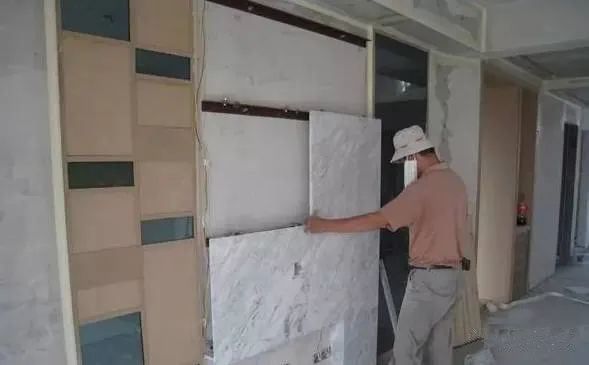
Scientifically care for the stone, avoid introducing iron that will make the stone yellow from the cleaning water or floor polishing process. Use good-quality penetrating waterproofing agents to protect the floor regularly, reducing the time and opportunities for water and stone contact.
Therefore, effective prevention of yellowing of white marble should be a comprehensive measure. In the case where the concrete floor or wall surface is not effectively waterproofed, the treatment of the back of the stone slab is particularly important. It is the most important step of all measures to choose the waterproof adhesive with guaranteed quality to waterproof the board back.
4. Removal of the yellowing of the stone surface
Once the yellowing phenomenon of the white marble slab is found, the first reason to find the yellowing. Before turning the suspected cause of yellowing to rust, first determine that yellowing is not caused by aging wax or other external factors. After excluding factors other than iron, start preparing for the removal of rust.
At present, stone care shops have various brands of iron and yellow removal agents. Although there is no product that discloses the basic chemical components, most of the iron and yellow removal agents on the market are acidic. Due to the poor acid resistance of marble, many acidic rust removers have a great erosion on the board surface while rusting. Excessive erosion of the marble slab will cause permanent damage to the slab.
Therefore, when using a rust remover, remember to stick a few layers of toilet paper on the surface of the stone when removing yellow, and then put the rust on the paper. After waiting for about two hours, Huang will gradually decrease, and it can be removed several times. Professional stone care personnel generally use acidic or even neutral cleaning agents to minimize the damage to the stone.
For the stubborn rust spots, use the method of plastering, that is, mix the rust remover and diatomaceous earth with water to make a paste, then apply the paste to the rust spots, cover with plastic film and seal the periphery with a dry tape, After 24 hours, the dried paste is removed, and after the removal is completed, the dissolved iron is collected with a special cleaning agent.
This last step is very important, because in the process of derusting, when the iron ions are diffused with the surface of the board, if these iron ions diffused on the surface of the board are not collected cleanly, the second yellowing will occur quickly, and the area will be more wide. Of course, you can also remove yellow at home (as shown below)
In view of the fact that the rust removal of stone slabs is a professional work, it is not recommended that non-professional owners or non-professional caregivers purchase rust removers without knowledge to remove the yellow spots or rust spots of the stone to avoid improper use of the stone. Permanent damage.
Let's enjoy the decorative effect of white marble


